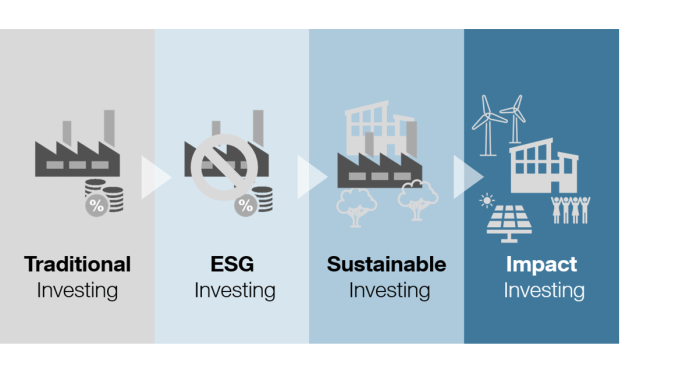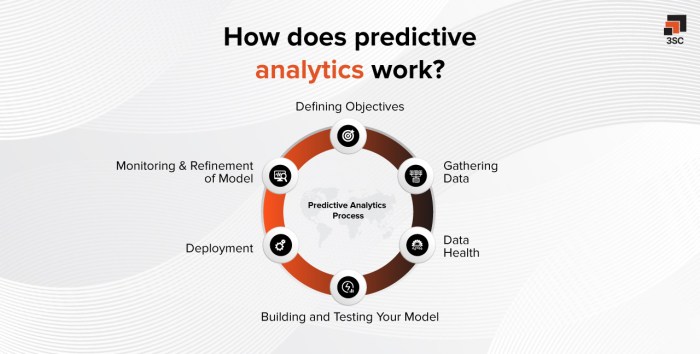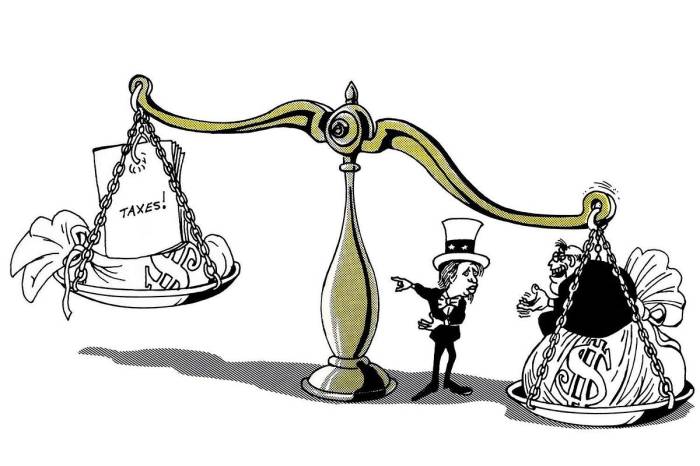How Accounting Standards Impact Economic Growth Forecasting is a critical area of study. Accurate financial reporting, guided by robust accounting standards like IFRS, forms the bedrock of macroeconomic models. The reliability of these standards directly influences the accuracy of economic predictions, impacting everything from GDP forecasts to investment decisions. Inconsistent or unreliable accounting data can lead to flawed economic models and ultimately, poor policy decisions.
This exploration delves into the intricate relationship between accounting standards and economic forecasting. We will examine how specific standards, such as those governing depreciation, revenue recognition, and lease accounting, influence key economic indicators. Further, we will analyze the role of transparency and comparability in facilitating accurate cross-country economic comparisons and discuss the limitations and challenges inherent in integrating accounting data into complex economic models.
The Interplay Between Accounting Standards and Economic Forecasting
Accounting standards form the bedrock of financial reporting, providing a standardized framework for businesses to present their financial performance and position. The reliability and consistency of this reporting are crucial for a multitude of stakeholders, but their impact extends far beyond individual companies; they play a pivotal role in shaping macroeconomic models and, consequently, economic forecasts. Accurate financial data, prepared according to well-defined standards, allows economists and policymakers to build more robust and reliable models for understanding economic trends and predicting future outcomes.
Accurate financial reporting significantly influences the accuracy of macroeconomic models. These models, which attempt to capture the complex interactions within an economy, rely heavily on input data derived from financial statements. If the underlying accounting data is unreliable or inconsistent – due to varying accounting practices across firms or a lack of transparency – the models themselves become less reliable, leading to inaccurate predictions. This inaccuracy can have significant consequences, impacting government policy decisions, investment strategies, and even consumer confidence.
The Impact of Inconsistent Accounting Data on Economic Predictions
Inconsistent or unreliable accounting data significantly hampers the effectiveness of economic forecasting. Consider, for example, a scenario where a significant portion of businesses utilize different accounting methods for depreciation. This inconsistency can lead to substantial variations in reported profits and assets across the economy. Macroeconomic models that rely on these inconsistent data points will generate inaccurate estimates of national income, investment levels, and overall economic growth. Similarly, a lack of transparency in financial reporting, particularly regarding off-balance sheet financing or contingent liabilities, can mask the true financial health of businesses, leading to flawed economic assessments. The 2008 financial crisis serves as a stark reminder of the consequences of such inconsistencies. The widespread use of complex financial instruments and the lack of transparent accounting practices obscured the extent of risk in the financial system, contributing to inaccurate economic predictions and ultimately exacerbating the crisis. A more robust and consistent application of accounting standards could have provided a clearer picture of the underlying risks, potentially mitigating the severity of the crisis.
Impact of Specific Accounting Standards on Forecasting Models
Accounting standards significantly influence the data used in economic forecasting models. The choice of accounting standards, and the specific methods employed within those standards, directly impacts the reliability and accuracy of key economic indicators, ultimately affecting the precision of economic growth predictions. This section will explore the influence of several key standards on forecasting models.
IFRS’s Influence on GDP Forecasting, How Accounting Standards Impact Economic Growth Forecasting
The adoption of International Financial Reporting Standards (IFRS) has had a measurable impact on GDP forecasting. IFRS, with its emphasis on fair value accounting and increased transparency, can lead to more accurate reflections of a company’s financial health. This improved transparency allows for more accurate estimations of corporate profitability and investment, key components of GDP calculations. For instance, the shift towards IFRS in the European Union provided economists with a more consistent and comparable dataset across member states, improving the accuracy of aggregate GDP forecasting for the region. However, the increased complexity of IFRS can also introduce challenges, particularly in developing economies where resources for implementation and interpretation may be limited, potentially leading to less reliable data for GDP calculations. The impact is not uniform across all sectors and countries, with variations depending on the level of adoption and the specific characteristics of the national economy.
Depreciation Methods and Capital Investment Predictions
Different depreciation methods (straight-line, declining balance, units of production) significantly affect a company’s reported profits and, consequently, its investment capacity. Straight-line depreciation, for example, spreads the cost of an asset evenly over its useful life, resulting in a more stable profit stream compared to accelerated depreciation methods like declining balance. This stability can lead to more predictable investment patterns, making forecasting easier. Conversely, accelerated depreciation methods can initially show lower profits, potentially underestimating a company’s true investment potential in the short-term. For example, a company using declining balance depreciation might appear less profitable in the early years of an asset’s life, potentially leading to underestimation of its future investment capacity in economic models that rely solely on reported profits. Accurate forecasting requires careful consideration of the depreciation method used and its implications for capital expenditure projections.
Revenue Recognition Standards and Sales Projections
The adoption of new revenue recognition standards, such as IFRS 15, significantly impacts sales projections and, subsequently, consumer spending forecasts. IFRS 15’s emphasis on the transfer of control as the key criterion for revenue recognition necessitates a more precise determination of when revenue is earned. This increased accuracy in revenue reporting can lead to more reliable sales projections. For instance, a company previously recognizing revenue upon shipment might, under IFRS 15, recognize revenue only when the customer obtains control of the goods or services, potentially leading to different timing of revenue recognition and impacting short-term sales projections. The effect on consumer spending forecasts is indirect but significant, as accurate sales projections are crucial for estimating aggregate consumer demand and its impact on economic growth.
Lease Accounting Changes and Economic Growth Modeling
The changes in lease accounting standards (IFRS 16) require companies to recognize most leases on their balance sheets as assets and liabilities. This contrasts with previous practices where many operating leases were off-balance sheet. The inclusion of lease obligations on the balance sheet significantly impacts key financial ratios, such as debt-to-equity and leverage ratios, which are frequently used in economic growth models. The change can lead to a more accurate reflection of a company’s true financial position and borrowing capacity. For example, a company with significant operating leases previously might have appeared less leveraged than it actually was. Post-IFRS 16, this company’s financial position is more accurately reflected, impacting assessments of its investment capacity and potential contribution to economic growth. The impact on economic growth modeling is significant, as these revised balance sheets provide a more realistic picture of corporate debt and investment potential.
Analyzing the Effects of Accounting Standard Changes on Economic Indicators
Changes in accounting standards can subtly, yet significantly, influence the interpretation of key economic indicators, impacting economic forecasting and policy decisions. The manner in which businesses account for assets, liabilities, revenues, and expenses directly affects reported financial data, which in turn feeds into broader macroeconomic analyses. Understanding this interplay is crucial for accurate economic modeling and informed policymaking.
Key Economic Indicators Affected by Accounting Standard Revisions
Several key economic indicators are sensitive to changes in accounting standards. These indicators, widely used to gauge the health and direction of an economy, can be distorted or misinterpreted if the underlying accounting principles are altered. For instance, shifts in depreciation methods can influence investment figures, while changes in revenue recognition can affect GDP calculations. The impact isn’t always immediately apparent, often manifesting as subtle shifts in trends over time.
Examples of Accounting Standard Changes Altering Economic Data Interpretation
The adoption of International Financial Reporting Standards (IFRS) provides a compelling example. The move from national Generally Accepted Accounting Principles (GAAP) to IFRS across many countries led to significant changes in reported financial data. For instance, the shift in inventory valuation methods or the increased detail required in reporting financial instruments affected measures of profitability and liquidity. This impacted investors’ perception of company performance and subsequently influenced market valuations and investment decisions. Consequently, macroeconomic indicators reliant on aggregated corporate data were affected. Another example is the adoption of new lease accounting standards (IFRS 16 and ASC 842), which significantly increased the reported liabilities of many companies, impacting balance sheet analysis and potentially influencing credit ratings and borrowing costs. These changes, in turn, influenced aggregate economic indicators related to corporate debt and investment.
Impact of Different Accounting Standards on Specific Economic Indicators
| Accounting Standard Change | Economic Indicator Affected | Type of Impact | Example |
|---|---|---|---|
| Adoption of IFRS 16 (Leases) | Corporate Debt Levels, Investment | Increased reported liabilities, potentially impacting credit ratings and investment decisions | Companies reported significantly higher liabilities, affecting aggregate debt figures and potentially influencing macroeconomic forecasts. |
| Change in Depreciation Methods (e.g., from straight-line to accelerated) | Investment, GDP, Corporate Profits | Altered reported depreciation expense, impacting reported profits and investment levels. | Faster depreciation leads to lower reported profits in early years, potentially underestimating investment and economic growth in short-term analyses. |
| Changes in Revenue Recognition (e.g., ASC 606) | GDP, Corporate Revenue, Economic Growth | Shifted timing of revenue recognition, affecting short-term economic growth measures. | The adoption of ASC 606 resulted in some companies recognizing revenue later, potentially leading to a temporary dip in reported GDP growth. |
| Changes in Impairment Testing of Assets | Investment, Corporate Profits | Increased write-downs of assets, impacting reported profits and investment. | More frequent impairment write-downs can lead to lower reported profits, potentially affecting investment and economic growth projections. |
The Role of Transparency and Comparability in Forecasting

Standardized accounting practices are crucial for accurate and reliable economic forecasting, particularly on a global scale. The degree of transparency and comparability afforded by these practices directly impacts the precision of economic models and the confidence placed in resulting predictions. Without consistent accounting standards, the ability to analyze economic trends and make informed decisions is significantly hampered.
Improved transparency in financial reporting is paramount for enhancing the accuracy of economic forecasts. When companies adhere to rigorous and consistently applied accounting standards, analysts gain a clearer picture of a firm’s financial health and performance. This clarity reduces ambiguity and allows for more precise estimations of key economic variables, such as GDP growth, inflation, and investment levels. The availability of reliable and comparable data allows for the development of more sophisticated econometric models that capture the complexities of the global economy.
Cross-Country Economic Comparisons Using Standardized Accounting Practices
Standardized accounting practices, such as those promulgated by the International Accounting Standards Board (IASB), facilitate meaningful cross-country economic comparisons. Without a common framework, comparing the financial performance of companies across different nations becomes extremely challenging. Differences in accounting rules can lead to distortions in financial data, making it difficult to identify genuine economic trends and assess the relative health of economies. For instance, varying depreciation methods or inventory valuation techniques can significantly impact reported profits and assets, obscuring true underlying performance. The adoption of IFRS (International Financial Reporting Standards) by many countries has significantly improved the comparability of financial statements globally, although challenges remain in ensuring consistent application and enforcement.
Enhanced Accuracy of Economic Forecasts Through Transparent Financial Reporting
Improved transparency in financial reporting directly contributes to more accurate economic forecasts. When companies disclose comprehensive and reliable financial information, analysts have access to a richer dataset to inform their models. This improved data quality allows for more accurate predictions of key economic indicators. For example, increased transparency in areas such as debt levels and off-balance sheet financing can significantly improve the accuracy of forecasts related to financial stability and credit risk. Furthermore, timely and accurate reporting of financial performance reduces uncertainty and allows for quicker adjustments to forecasts in response to changing economic conditions.
Hypothetical Scenario: Lack of Accounting Standardization in Global Economic Modeling
Imagine a scenario where there is no globally accepted set of accounting standards. Economists attempting to model global economic growth would face significant challenges. Data from different countries would be incomparable, making it impossible to accurately aggregate economic activity across borders. For instance, a country using historical cost accounting might report significantly lower asset values compared to a country using fair value accounting, leading to inaccurate estimates of national wealth and investment levels. This lack of standardization would result in unreliable macroeconomic forecasts, making it difficult for policymakers to make informed decisions regarding monetary and fiscal policy. The resulting uncertainty could lead to decreased investor confidence, hindering economic growth and potentially destabilizing the global financial system. This hypothetical situation highlights the crucial role of standardized accounting practices in fostering a stable and predictable global economic environment.
Limitations and Challenges in Incorporating Accounting Standards into Economic Models

Incorporating accounting data into economic forecasting models offers valuable insights, but it’s crucial to acknowledge the inherent limitations and challenges. The accuracy and reliability of economic forecasts are directly impacted by the quality and completeness of the underlying accounting data, and relying solely on accounting information can lead to skewed predictions and misinterpretations of economic trends.
Accounting standards, while designed to enhance transparency and comparability, often fail to fully capture the dynamic and multifaceted nature of economic activity. This mismatch between the standardized framework of accounting and the complexities of the real world introduces potential biases and inaccuracies into economic models.
Potential Biases Introduced by Accounting Data
The use of accounting data in economic forecasting can introduce several biases. For example, the historical cost principle, prevalent in many accounting standards, can understate the true value of assets, especially during periods of inflation. This can lead to an underestimation of a company’s true worth and its contribution to overall economic growth. Similarly, the inherent conservatism in accounting practices, where potential losses are recognized more readily than potential gains, can lead to a pessimistic outlook in economic forecasts. Furthermore, differences in accounting practices across countries can complicate cross-border comparisons and limit the scope of global economic analysis. For instance, differing depreciation methods used by firms in different nations can lead to significant variations in reported profits, impacting macroeconomic forecasts.
Incomplete Capture of Economic Reality by Accounting Standards
Accounting standards primarily focus on financial transactions and are inherently backward-looking. They often fail to capture intangible assets, such as intellectual property, brand reputation, and human capital, which are increasingly significant drivers of economic growth in knowledge-based economies. The exclusion of these crucial elements results in an incomplete picture of a firm’s true economic value and its contribution to the overall economy. Moreover, accounting standards typically do not account for qualitative factors, such as management quality, technological innovation, and geopolitical risks, which significantly influence a company’s performance and, by extension, economic forecasts. For example, a company with a strong innovative culture might show modest financial performance in the short term, but its future growth potential, often not reflected in accounting data, could be substantial.
Challenges in Integrating Qualitative Information into Quantitative Models
Integrating qualitative information into quantitative economic models built upon accounting data poses a significant challenge. Qualitative factors, while crucial for a comprehensive understanding of economic activity, are difficult to quantify and incorporate into mathematical models. For instance, incorporating the impact of consumer sentiment or changes in government policy on economic growth requires sophisticated methodologies that can bridge the gap between qualitative assessments and quantitative data. Furthermore, the subjective nature of qualitative information makes it susceptible to biases and inconsistencies, potentially undermining the reliability of the resulting economic forecasts. The lack of standardized methodologies for incorporating qualitative data into quantitative models limits the widespread adoption of this approach, hindering the development of more comprehensive and accurate economic forecasts.
Future Directions and Research Opportunities
The integration of accounting standards into economic forecasting remains a fertile ground for future research. While progress has been made, significant challenges persist, particularly in accurately capturing the nuanced impact of accounting standard changes on diverse economic indicators across various sectors. Further research is crucial to enhance the reliability and precision of economic models, leading to more accurate forecasts and improved policy decisions.
The current methodologies often struggle to fully account for the complexities introduced by variations in accounting standards across different jurisdictions and time periods. A more robust framework is needed to effectively incorporate these variations, ensuring the models remain accurate and relevant in a globalized economy. This requires a multi-faceted approach, encompassing methodological improvements, data enhancement, and interdisciplinary collaboration.
Areas Requiring Further Research
Further research should focus on several key areas to improve the integration of accounting standards into economic forecasting. These include exploring the differential impact of accounting standards across various industries, refining the methodologies used to incorporate accounting information into macroeconomic models, and developing more sophisticated techniques for handling the inherent uncertainties associated with accounting data. A deeper understanding of how accounting standards affect firm-level decisions and their subsequent macroeconomic consequences is also needed. This requires both quantitative and qualitative research approaches, combining econometric analysis with case studies and interviews with accounting professionals and economic policymakers.
Enhancing Economic Models to Account for Accounting Standard Variations
Improving the design of economic models necessitates a move beyond simplistic assumptions about the uniformity of accounting practices. Models should explicitly incorporate the diverse range of accounting standards used globally, allowing for a more nuanced analysis of their impact on economic indicators. This could involve developing dynamic models that adjust for changes in accounting standards over time, or incorporating a “standard-specific” component into existing models to capture the unique effects of each standard. Furthermore, the use of advanced statistical techniques, such as Bayesian methods, could help to address the uncertainties and complexities associated with accounting data. For example, a model could be developed that weighs the impact of different accounting standards based on their prevalence in specific sectors or countries.
Research Study: The Impact of IFRS 9 on Loan Loss Provisioning and Economic Growth
This research study will investigate the relationship between the adoption of IFRS 9 (International Financial Reporting Standard 9: Financial Instruments) and loan loss provisioning on economic growth. IFRS 9 introduced a more forward-looking approach to impairment calculations, requiring banks to estimate expected credit losses (ECL) rather than incurred losses. This change could impact bank lending behavior and overall economic activity.
The study will utilize a difference-in-differences approach, comparing the economic growth of countries that adopted IFRS 9 early with those that adopted it later or not at all. The dependent variable will be a measure of real GDP growth, while the independent variables will include the level of loan loss provisioning (as a percentage of total loans), the timing of IFRS 9 adoption, and control variables such as interest rates, inflation, and government spending. The analysis will employ panel data regression techniques to control for unobserved country-specific effects and time-invariant factors. The expected outcome is to quantify the impact of the change in loan loss provisioning driven by IFRS 9 on economic growth, potentially revealing whether the more stringent approach to impairment has led to a contraction in lending or other macroeconomic effects. This will be measured by comparing changes in loan growth, investment, and GDP growth in the treatment and control groups before and after the implementation of IFRS 9. A robust analysis will account for potential endogeneity issues and the influence of other concurrent economic factors.
Closing Summary
In conclusion, the impact of accounting standards on economic growth forecasting is undeniable. While challenges exist in fully capturing economic complexity within quantitative models, the pursuit of greater transparency, comparability, and improved standard design is crucial. Further research is needed to refine the integration of accounting data into economic models, ultimately leading to more accurate predictions and better-informed economic policy.
Top FAQs: How Accounting Standards Impact Economic Growth Forecasting
What are some examples of biases introduced by using accounting data in economic forecasting?
Accounting data can reflect managerial biases in reporting, leading to skewed economic indicators. For instance, aggressive revenue recognition practices might inflate short-term growth projections while masking underlying weaknesses.
How do qualitative factors influence economic forecasting, and how can they be integrated with accounting data?
Qualitative factors like consumer sentiment, geopolitical events, and technological disruptions significantly impact economic outcomes. Integrating these factors requires sophisticated modeling techniques that combine quantitative accounting data with qualitative insights from surveys, expert opinions, and other sources.
How do accounting standards affect the accuracy of inflation forecasts?
Changes in inventory valuation methods, for example, can directly impact the calculation of inflation rates. Consistent and transparent accounting practices are vital for accurate inflation measurement.
Check Understanding the Tax Implications of Business Transactions to inspect complete evaluations and testimonials from users.









